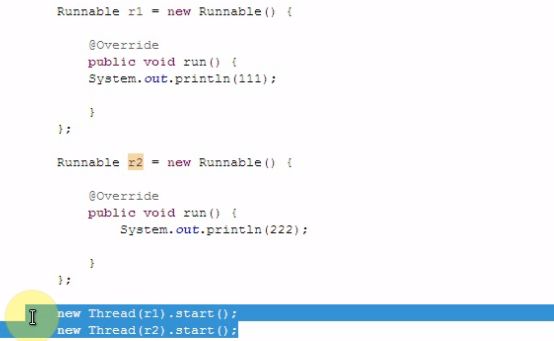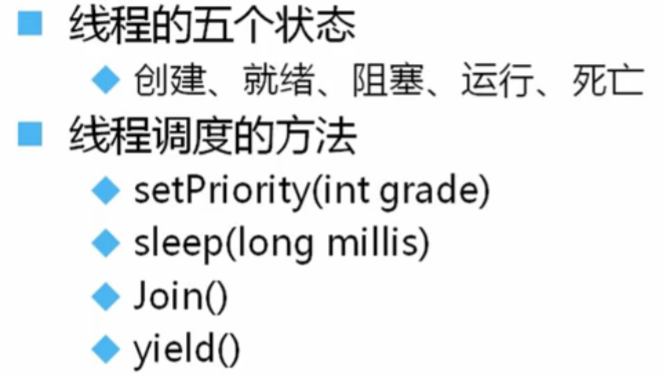一、多线程的书写步骤
1.线程类继承Thread
2.线程类中重写run()方法
3.测试类中创建线程对象,并用start()方法启动线程
Runnable接口的方式
1.线程类继承
2.创建线程对象:假设线程类是Runnable,则用Runnable myRunnable = new MyRunnable();创建对象,然后用Thread t = new Thread(myRunnable);创建
3.启动线程
public class Battle implements Runnable{ private Hero h1; private Hero h2; public Battle(Hero h1, Hero h2){ this.h1 = h1; this.h2 = h2; } public void run(){ while(!h2.isDead()){ h1.attackHero(h2); } } }
Battle battle1 = new Battle(gareen,teemo); new Thread(battle1).start(); Battle battle2 = new Battle(bh,leesin); new Thread(battle2).start();

注意:这种方法必须创建一个对象
线程对象调用start(),方法和调用run()方法的区别
1.run()只有主线程一条执行路径
2.start():多条执行路径,主线程与子线程并行交替执行

匿名内部类的方法:直接在Test类中重写run方法
Thread t1 = new Thread() { @Override public void run() { // TODO Auto-generated method stub while (!teemo.isDead()) { gareen.attack(teemo); } } }; t1.start();
线程的一些常用方法
优先级有1~10表示,1最低,默认优先级为5

同步方法:

多线程的同步方法有3中:
1.匿名内部类中synchronize(一个对象)
synchronized (gareen) { gareen.hurt(); }
2.方法中同步
public void recover() { synchronized (this) { hp = hp + 1; } }
3.方法声明处同步
public synchronized void hurt() { hp = hp - 1; }
线程数组的使用
1.声明
int n = 100; Thread[] addThread = new Thread[n]; Thread[] reduceThread = new Thread[n];
2.创建每一个线程(匿名内部类的方式)
for (int i = 0; i < n; i++) { Thread t1 = new Thread() { @Override public void run() { // TODO Auto-generated method stub synchronized (gareen) { gareen.hurt(); } try { Thread.sleep(100); } catch (InterruptedException e) { // TODO: handle exception e.printStackTrace(); } } }; t1.start(); reduceThread[i] = t1; }
静态类的方法
static class RecoverThread extends Thread{ private Hero hero; public RecoverThread(Hero hero){ this.hero = hero; } public void run(){ while(true){ hero.recover(); try { Thread.sleep(100); } catch (InterruptedException e) { // TODO Auto-generated catch block e.printStackTrace(); } } } }
调用
for (int i = 0; i < 2; i++) { new RecoverThread(gareen).start(); }
3.for循环加入
for (Thread t : reduceThread) { try { t.join(); } catch (InterruptedException e) { // TODO: handle exception e.printStackTrace(); } }
非线程安全的类转换为线程安全的类
其他类似有:HashSet,LinkedList,HashMap等
List<Integer> list1 = new ArrayList<>(); List<Integer> list2 = Collections.synchronizedList(list1);